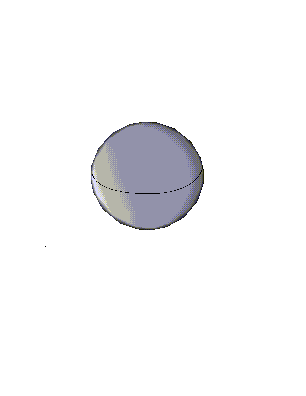The Radar-ranging experiment measured the time it takes for the radar to go from the earth to Mercury and back.
Geometrizing Gravity
Einstein's Idea:
A Path to the Geometrization of Gravity--'Suggested' by Experiments
...This is a 'new' organization of ideas...somewhat different from what is in the book...
We take the point of view that whatever theoretical foundation we put down for gravitation and other phenomena, we base it as closely as possible to experimental results.
We take the following experimental underpinnings as given [i.e. well tested and verified]:
Thus the local spacetime structure is given by the interval between events in a local region:
ds2 = - c2dt2 + dx2 + dy2 + dz2
Note that Minkowski spacetime possesses the causal structure imposed by the lightcone.
Using g = G M/ R2e we could show that the form is
ds2 = - c2 ( 1 -2GM/(c2 r))dt2 + dx2 + dy2 + dz2
where the combination rs = 2GM/c2 is called the Schwarzschild radius and will play an important role later. Note that as we get far from the object whose mass is M we approach the Minkowksi spacetime model.
The Radar-ranging experiment measured the time it takes for the radar to
go from the earth to Mercury and back.
Among the various possibilities of things to change, we take the Einstein
point of view that it is the geometric structure which is to encode the
information related to gravitation. This point of view suggests that we
consider warping space in addition to time.
This means that we consider the following form for the interval between events:
ds2 = - c2 ( 1 -2GM/(c2 r))dt2 + gxxdx2 + gyydy2 + gzzdz2
where the gxx, gyy, and gzz are functions to be determined so that the resulting spacetime structure is consistent both with the Pound-Rebka experiment and the Shapiro radar-ranging experiments.
The important point to make is: The 1915 geometric theory of gravitation of A. Einstein does this without any freely adjustable parameters!
Geodesics of Spacetime
In Euclidean space, the shortest distance between two points is a 'straight' line...
However, on the surface of a sphere the shortest distance between two points on the sphere is not the Euclidean distance between those points....one must stay on the surface.
On the surface of the sphere, there are paths which connect pairs of points in the shortest way : the great circles do this:

The equator-circling curve is closed, of finite length, and the is an ideal curve in the sense that it is the shortest one which goes around the equator and returns to its original point.
The geodesic curves on a two-dimensional surface are defined to be those which have the shortest possible lenght as measured by observers who live and move in the surface without knowledge of any higher-dimensional space outside.
For the General Theory of Relativity, Einstein chose to identify these shortest possible curves in SOME four-dimentional spacetime with the paths along which test particles move.
Connections
It was not realized until almost 1918 that another important element which is needed is this concept of connection....by Hermann Weyl and Tuillio Levi-Civita...
The basic idea:
In order to compare quantities at different spatial points one needs to have a method whereby the objects which live at those points can be copied and brought to the same point for the comparison.
Consider the problem of comparing two vectors at different points A and B. In Euclidean space we do this as follows.
However, in non-Euclidean spaces such as the surface of the sphere, this procedure is not well-defined without some modifications...
The point: Whether in Euclidean space or some more general space, one needs a RULE to be in effect to allow the comparison of objects at different points...
The rule which tells one how to compare objects at different points is called a CONNECTION.
Elie Cartan and the Geometrization of Newtonian Gravity
In the period 1921-1925 the famous mathematician Elie Cartan showed how Newtonian gravitation could be 'geometrized' by making use of this idea of connection.

Cartan invented a new operation: D/Dt which included the force term as part of the definition with the result that the object freely falling in a gravitational field does so uniformly with respect to this new D/Dt rule. It is this new derivative rule which incorporates gravity in the rule itself. No longer is it the case that gravity is a separate force, but rather it is included automatically in the definition of how we move from point to point in the simplest manner....
This rule for connecting points in a world with gravitation included in the very geometric fabric shows that the Einstein goal can be achieved even for Newtionian gravitation !!
The motion of an object which adapts as best it can to the background geometry will move along the simplest path: a geodesic path.
Hence: Cartan achieved a version of the Einstein program but did not have to resort to changing the Euclidean nature of space or time..... However, the resulting geometrized version of Newtonian gravity is incompatible with the Special Theory of Relativity.
We shall presently see that Einstein went the whole way in that he geometrized ALL OF space , time, and the connection to non-Euclidean versions. Only then did he achieve the synthesis.